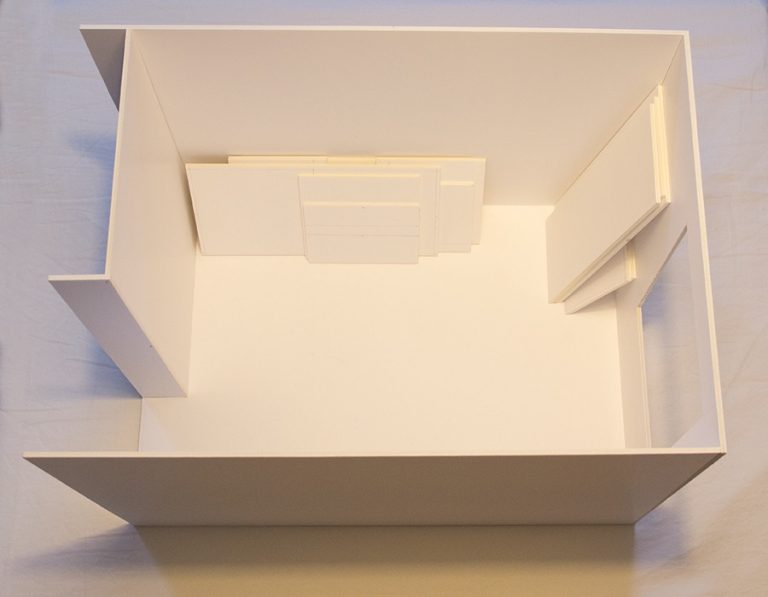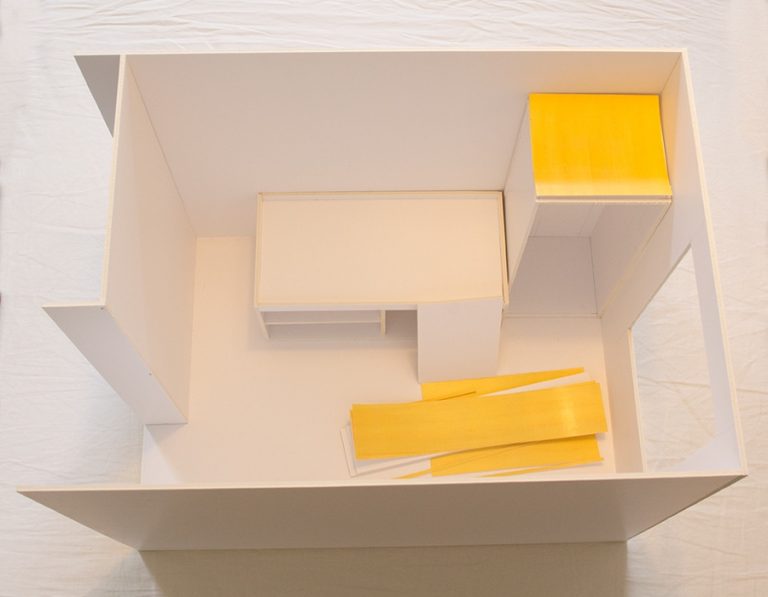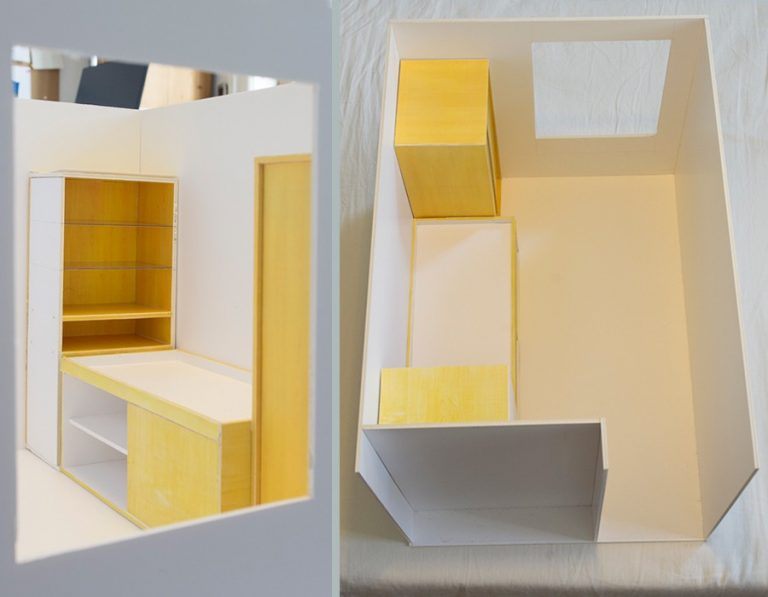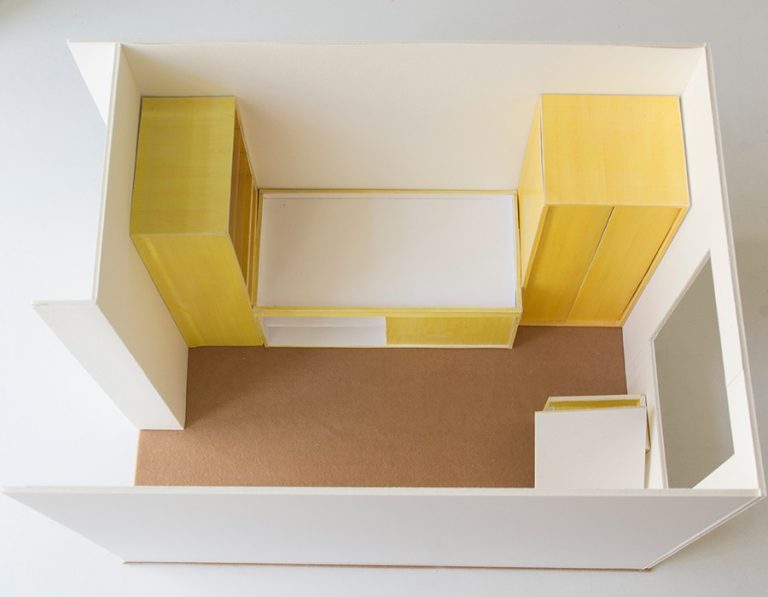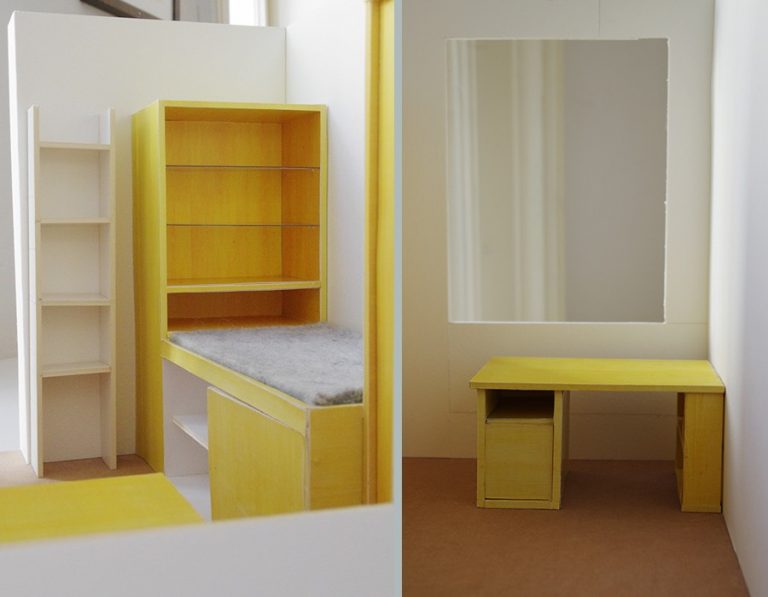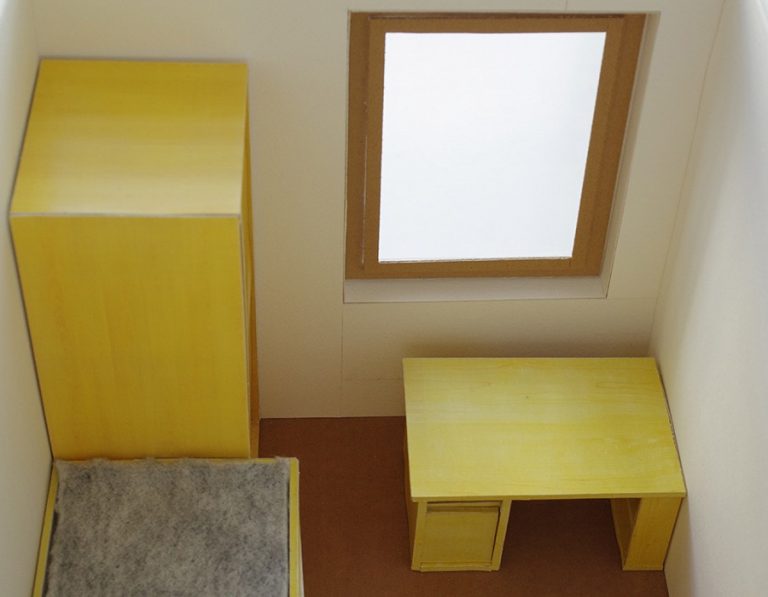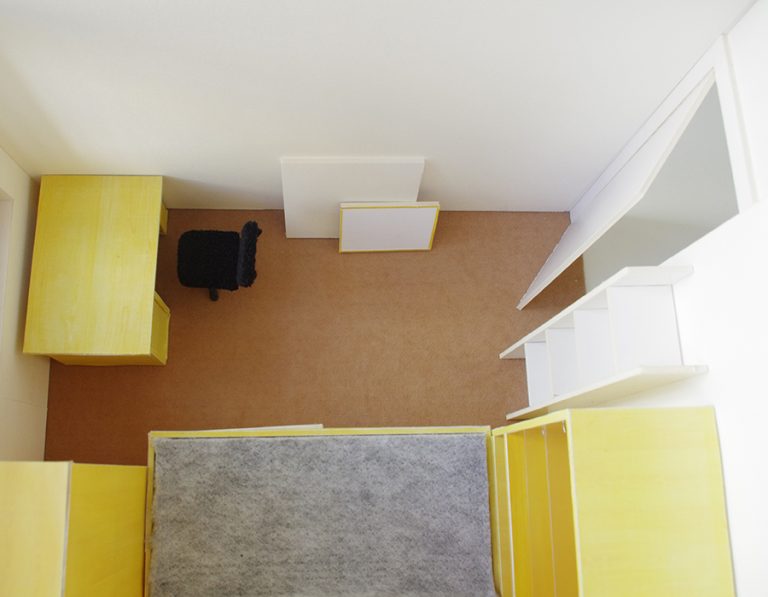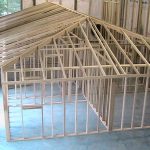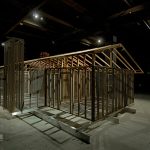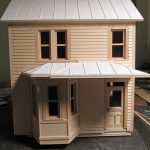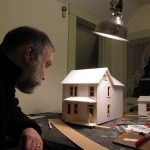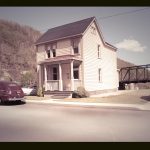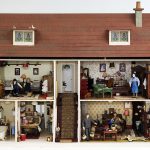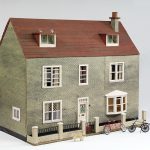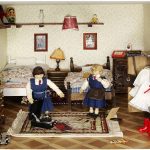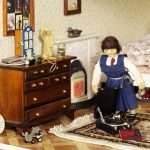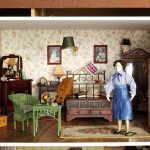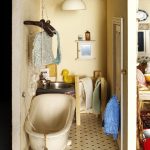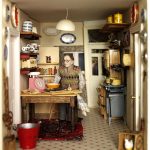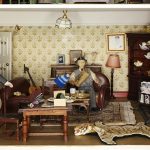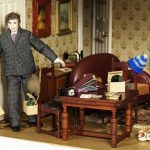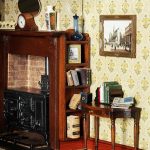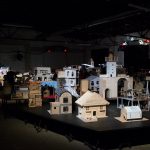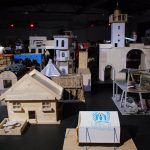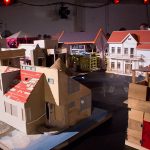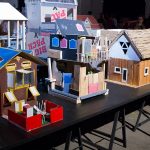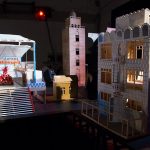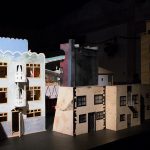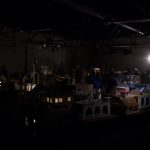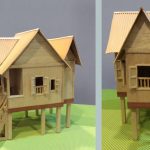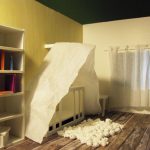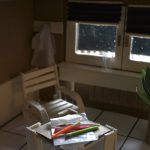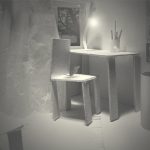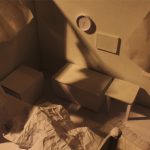Memory Models (since 2016)
The Memory Model Project investigates the capacity of three-dimensional models to trigger and monitor memories and it suggests a new domain for the application of models. Standardly, they are used (both in professional and hobby contexts) to represent objectively verifiable referents. By contrast, a place in a person’s memory is a subjective, unverifiable referent. As an autobiographical practice, it is hypothesised that making models from memory can supplement the verbal report, which is the dominant format to share memories. Models, it is further assumed, lend themselves in particular to conveying / interpreting spatial (as opposed to episodic) memories.
The extent to which memory models can be a novel medium for the retrieval, self-presentation, creation and communication of personal recollections is being explored. In the midterm, the Memory Model Project may be continued and expanded within an institutional context; at present, it is a personal undertaking with very limited ressources. The current investigation focuses on a literature and practice review as well as on practical experimentation.
This site is regularly updated to share intermediate results:
- A series of working papers
- A reflection-in-and-on-action protocol of an evolving memory model
- A collection of related works and projects by other people
See also: project Once was now (2019), in collaboration with Claudia Antonius
I Working Papers
The following working papers cover intermediate results of the ongoing literature and practice review as well the developing theory of memory models. They take the form of essays but they do not raise claim to meet the standards of ‘academic writing’. Neither, do they claim to apprehend the most pertinent research in areas in which I am not an expert – most notably, psychological and sociological/anthropological studies of memory and concepts of domestic space. All this is reserved for a later stage of the project.
Memory and Models;
The ‘Memory Approach’
The ‘Model Approach’
Document, Trigger, and a Precarious Referent
The Theme of ‘Home’
Aims and Objectives
Definitions
Mapping the terrain
Memory: Models as Triggers and Monitors of Recollections
Trigger: The Memory Model as a Memory Trigger
Therapeutic Perspectives
Private Memorials
Monitor: The Memory Model as a Document of Personal Memories
Obstacle 1: The ‘Faultiness’ of Memory
Obstacle 2: Skill and Medium
Obstacle 3: What One Knows and What One Shows
Models: Enchantment, Utility, and Art
Three Realms of Models
Artisan Miniatures (Models as Craftwork)
The Appeal of Miniature Appreciation
The Appeal of Miniature Making
Miniature Epistemology
Applied Models (Models as Tools)
Applied Models’ Epistemology: Issues of Representation
Epistemology and the Design Experience
Models-as-Art
Questioning Modelhood
The model as a Narrative Vehicle
Models-as-Art or Model-like Sculptures?
Categorical Hybrids
Conclusion
Home: Domestic Space ‘through Memory through Model’
Domestic Space as a Research Topic
Types of Home
The Home as a Formative Place
Atmosphere
The Model as a Medium of Home-related Memories
Model Homes: Social Aspects of the Home, Remembering, and Modelling
Models of Homes in Contemporary Art
Model-making as Research
Time Frames
Building Materials, Analogy and Abstraction
Photo-based Works
Summary and Implications for the Memory Model Project
II Reflection-in-and-on-action protocol* of
an evolving memory model
To explore the concept of the memory model, I have been re-constructing my own boy’s room. A log has been kept accompanying the work. It includes both my reflection on emerging technical issues and recovered memories. The captions of the images on the right are excerpts from this log.
My own example is unlikely to be representative of the typical kind of remembering associated with making memory models. Conversations with model makers who have embarked on similar projects (see below) indicate that the kinds of details that people recall during the modelling process can be very different. Also, other people may choose different materials and different degrees of abstraction. Thus, this is to be seen as an example of a method rather than of typical content.
*Designer and arts-based research scholar Steven Scrivener suggests keeping a record of ideas and problems surfacing during the work (“reflection-in-action”) and after its completion (“reflection-on-action”). This method has been adopted for the purpose at hand.
III Related works and projects
The idea to model a former home from memory is, of course, not entirely new. A variety of related practices is discussed throughout the working paperers (see in particular Part II (b): Models of Homes in Contemporary Art). Many of these examples touch on ideas and problems concerning specific aspects of the memory model; only very few, however, reflect the distinct combination of objectives pursued by the (intended) Memory Model Project. The examples below show the ‘closest relatives’ that could be identified so far.
Photos courtesy of the the artist. Images 2 and 3 by John Carlano.
Installation view: Gray Area, Crane Arts Philadelphia 2008.
Description from the artist’s website:
“This is an attempt to reconcile early spatial memories with a structure that conforms to architectural logic. From memory, I tried to recreate a house (at half scale) I lived in from 1974 to 1977. … “
Michael Grothusen: Scale Model, from memory
2008. Wood, window screen and aluminum
Context: Contemporary visual art
The work is based on a plan drawing made from memory by trying to remember all of the spatial relationships of the rooms and location of windows, doors and furniture.
Grothusen: “Working on the drawings and the sculpture sent me down a path of recalling many minute details of the furniture, lighting fixtures, the view out the windows and the kinds of interactions I’d have with family members and room mates. It started off as an exercise in memory, but also made me think about making memory (which can be jumbled and fragmentary) conform to the kind of logic needed to build a building, namely that the parts had to fit together. The drawings had lots of smears and eraser marks on them that were a recording of me trying ‘to get it right’ and make the rooms fit together in a logical and reasonable way. They had to fit together and form a ‘truth’, but that is a word that I think always needs quotation marks because it is so subjective, especially when dealing with memory.” (Personal communication, 2016)
Michael Paul Smith: Re-creation of a childhood home in Pittsburg
2011 (made). Foam board, plastic, wood, paper.
Context: Craft, miniature art, photography
Smith: “Although I had very clear memories of that time and place, once I started to construct the model, truck loads of unpacked memories tumbled forth … As my work expanded, I found myself recalling conversations and reminisces of my parents and relatives … [M]y sense of smell and hearing was also picking up the ambience of the house. The radio faintly playing in the kitchen, Mom making breakfast and the scents that wafted through the rooms. The sound of foot steps on linoleum covered floors … everything was attached to each other, and that included the emotional atmosphere. … Looking at models or miniatures always brings on the memories, but when I actually make them myself, then the flood gates open.” (Personal communication, 2016)
Photos © Victoria and Albert Museum, London.
Roma Hopkinson’s dolls’ house
Late 1980s to late 1990s (made). Painted wood, plastic, paper. Given to the Victoria and Albert Museum, London by Claire Hopkinson.
Context: Craft, hobby modelling
From the V&A’s description: “This house is a replica of a real house in Surrey where Roma Hopkinson lived with her family during the Second World War. Roma built this house in the 1980’s, paying incredible attention to detail, reproducing ration books, identity cards, newspapers, and photo albums by reducing copies of the original versions. The photographs show her family as they appeared at that time. Each doll is also modelled on a family member with Roma appearing as one on of the children in a school dress. The house accurately reflects the wartime era, showing popular products, foodstuffs, games, and furnishings from the time.”
Photo: Jörg Jozwiak, taken at the opening of the project’s final exhibition
‘Weltstadt’ on May 11th 2017 in Berlin.
Casa Mia
2016/17. Recycled materials; sound and light installation.
Context: Community art
Casa Mia was a community art project, run by the art and culture initiative Schlesische27 in Berlin. It has offered children and young adult refugees in the city the opportunity to recreate their former dwellings and favourite places as well as model their dream homes. Mostly based on souvenir photographs and assisted by professional artists, participants have built models – “witnesses of the various life stories that the participants [came] up with” as the organisers state.
Wan Morshidi: Kapong Dagang; re-creation of a childhood home on Borneo
2012-14. Balsa wood.
Context: Craft, hobby modelling
Malayan hobby model maker Wan Morshidi rebuilt the entire village of his childhood from memory. ‘Kampong Dagang‘ was overrun by the expanding city of Miri in the 1970s with no visual record left. More images of this work can hopefully be made available in the future.
Coulton Mill
year unknown
Context: Craft, hobby modelling
Thomas Harrison, until 1950 the last miller of Coulton Mill, Hovingham (UK), made a working model of the mill from memory. Featured in the BBC documentary “Restauration Home”, 2012 (serie 2, episode 6, 07:07 Mins.)
Courtesy of S.Dornbusch/Hochschule Trier.
Be a Demand
2014. Mixed Media
Context: Workshop, student project
As part of a workshop (led by Prof. Stefan Dornbusch) students of architecture were asked to model their childhood room from memory and document the results photographically.
Remainder
2005/2015. Literature, motion picture
Context: Fiction
In Tom McCarthy’s 2005 novel Remainder (Alma Books, London), hero Tom Sturridge tries to reconstruct the memory of the house he used to live in before having an amnesic accident. Images taken from Omer Fast’s 2015 film adaption of the book.

